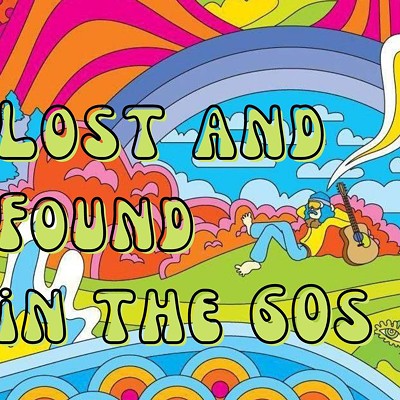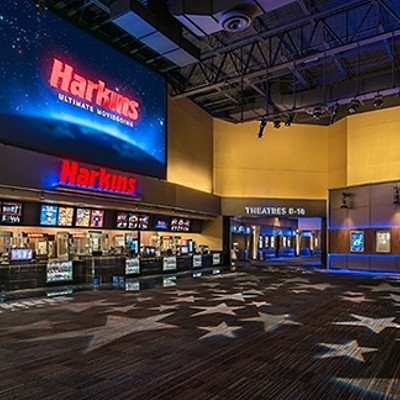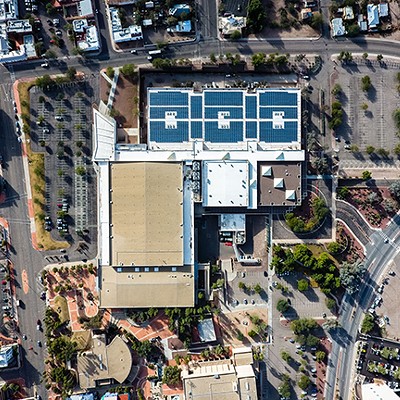About 500 A.D., Hohokam villagers picked some prime real estate. According to the current keeper of the site, Rancho Vistoso developer and spokesman Dick Maes, Hohokam Village is Zone 1 Commercial--that is, shopping mall, high-density housing, or resort property.
With a spectacular view of Pusch Ridge, Hohokam lived on this site continuously for 700 years; this was one of only a few of the 120 or so villages in the Tucson area with such a stable history. Around 1200, for reasons unknown, significant numbers of Hohokam across the basin relocated outside this valley.
Today the Hohokam villagers' patch of desert, with human remains, ball court, pit house ruins and trash mounds hidden under desert soil and shrub, sits surrounded by Rancho Vistoso's pressboard, Styrofoam and stucco visions of luxury.
The bulldozers are getting their teeth sharpened in anticipation of devouring this 90-acre morsel, too.
But not so fast, or so the town of Oro Valley decided August 30. Rancho Vistoso's paid pot-diggers had barely scraped the topsoil off the ball court, the hub of the Hohokam villagers' life, when neighbors snitched and the operation was shut down amid the buzz of news helicopters. Oro Valley issued Rancho Vistoso a stop-work order for noncompliance with the town's recent ordinances governing archaeological and historical sites.
Bryant Nodine, Oro Valley's planning and zoning administrator since 1998, says developers are barred from excavation unless they secure approval of a development plan that includes details for either preserving archaeological sites or excavating them and turning collected artifacts over to the state. Rancho Vistoso had not submitted plans, even though the ordinances had become law about two years ago, when the town council and community decided to have some say in the fate of archaeological sites.
Oro Valley originally outlined plans for Hohokam Village--the whole village covered about 75 acres--in the mid '80s. The approved plan had Hohokam Village's core 12 acres "preserved in place" and the city center relocated around it.
Preservation in place could mean partial excavation and public display of some parts of the site and camouflage of others, or total camouflage with plaques marking key spots, or other possible combinations. Archaeologists consider such sites "banks" where historical and cultural clues of ancient people are held for future exploration, hopefully with better science and technology. But the city center idea collapsed and so did Rancho Vistoso's plans.
As to what those plans are now, Maes will only say, "I can't tell you because that hasn't been decided."
Nodine says, "I think my personal feeling and the community's are closely aligned. We want a policy to preserve."
In addition to violating the two Oro Valley ordinances, Rancho Vistoso's August ground scraping trespassed its 1996 agreement with the Tohono O'Odham tribe concerning treatment of known burial sites. The developers had agreed to allow tribal supervision of any digs, and tribal handling of any discovered remains.
"When we called them in the past, they never showed up," is the way Dick Maes explains the oversight.
Daniel Preston is an independent Native American consultant for culture and resources who, at the request of the O'odham tribe, helped negotiate the four-year-old agreement with Rancho Vistoso Partners. Preston says only three people are responsible for repatriation of human remains and burial artifacts for the entire Southwest into Mexico, and Hawaii. Responding to developer requests on short notice is not always an option, he notes.
Lynn S. Teague, curator of archaeology and repatriation coordinator for the Arizona State Museum, who brokered the agreement, says Rancho Vistoso's failure to inform is a civil matter the tribe has grounds to pursue in court.
Preston says the tribe is looking at a precedent set in a similar incident litigated and settled out of court. The tribe, according to Preston, is considering options, but the first choice is to sit down again with the developers and explain again what Hohokam Village means to the O'odham.
Maes insists Rancho Vistoso was within its rights to dig on its property. Over the 15 years since he moved from Chicago to develop Oro Valley he has seen many sites excavated.
"They always find the same things: broken pottery, stones, pieces of bone, hardly ever a whole skeleton. Dig down a foot and half," he says, his hands spread wide and the soles of his expensive cream and tan golf shoes touching earth near the center of the small ball court, "and there's just hardpan. That's it. That's all you find."
William H. Doelle, president of the firm Desert Archaeology, consulted on the Honeybee Canyon Management Plan, which included preservation of Hohokam Village and was approved by the Oro Valley Town Council in the mid '90s.
"Hohokam Village is definitely a major site in the Tucson basin," Doelle says. "First, it was so close to Sleeping Snake. It's rare to have two settlements that close together."
A less ancient site with a bigger ball court, Sleeping Snake fell through the cracks created by prior lack of ordinance and was excavated last January with hardly any notice and cleared for housing, and so officially no longer exists.
"Hohokam Village was relatively undisturbed. It's not likely we will find others like it in that area," Doelle says. "Pima County has Hohokam Village on a list of its most important sites.
"I'm pessimistic," he admits, "because I have watched so many things go under." He invokes Phoenix, which had more extensive prehistoric settlement than Tucson and which has covered over most of its ancient civilization area.
"But it's not an impossible situation. It's realistic the town of Oro Valley could take the initiative to preserve and it doesn't have to be a confrontational one."
The Archaeological Conservancy is a non-profit organization that has helped preserve 18 sites in Arizona alone, 186 around the United States. James B. Walker, Southwest regional director in New Mexico for the Archaeological Conservancy, says he has heard of Hohokam Village, but his organization has not yet been asked to intervene.
One method the Conservancy uses to preserve sites is to buy the land at a depreciated value and let the developer take a tax write-off. Sometimes the site is returned to a community for a park and public use.
"The developer has a choice under the county ordinance: dig or preserve. It needs to be an economic decision," Walker explains. "Archaeology can cost more than the property is worth. How much to excavate can be negotiated by the city."
Excavation can cost $1 million or more an acre, according to Walker. And according to its ordinance, the town of Oro Valley could require archaeology for all 75 acres.
The digging would have to be pretty pricey to deter Rancho Vistoso. The 44 lots on Honeybee Ridge to the north of the site are selling for $300,000 an acre, with homes starting at $1 million. Considering the rapid razing of Sleeping Snake and the past license Rancho Vistoso has had to excavate, it will take a powerful community consensus to enforce ordinances, negotiate, and influence developer decisions about Hohokam Village.
Daniel Preston from the O'odham, whose tribal name sounds like an echo of Hohokam, sees it this way: "There's a spirit to the land. When some people come and they don't acknowledge what has been there in the past, there's a bad, bad feeling. People can't understand why things go bad. Nothing good ever happens when you're disrespectful. If you're only looking at it for money, nothing good ever comes of it."
There's still a chance for all concerned that something good comes for Hohokam Village.













